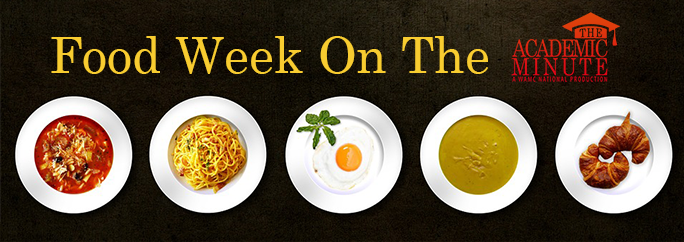
 The taste of food might come from more than just your taste buds.
The taste of food might come from more than just your taste buds.
Douglas Archer, professor in the institute of food and agricultural sciences at the University of Florida, examines how all of our senses are responsible for appreciating the flavors of our next meal.
Dr. Archer was appointed Professor and Chair, Food Science and Human Nutrition Department, Institute of Food and Agricultural Sciences, University of Florida, on January 1, 1994. He stepped down as Chair on January 1, 2001 to return to the faculty. He was selected to be an Associate Dean for Research, UF/IFAS in February, 2006
Total Sensory Foods
 Researchers have been studying how human senses link in the brain in areas termed the “pleasure centers” to give humans their perception of a food’s taste, or flavor. Our studies include demonstrating how the volatile substances of foods – their odors – modulate basic tastes, such as sweetness and bitterness.
Researchers have been studying how human senses link in the brain in areas termed the “pleasure centers” to give humans their perception of a food’s taste, or flavor. Our studies include demonstrating how the volatile substances of foods – their odors – modulate basic tastes, such as sweetness and bitterness.
You can demonstrate this for yourself at your next meal. Pop a fruit candy into your mouth while holding your nose, then release your nose while chewing. That sudden rush of flavor, and the increased sweetness of the candy, is an example of how the volatiles you smell change perceived flavor.
We’re also investigating how sight influences a food’s flavor. Imagine being served a meal in an elegant restaurant versus receiving a messy plate of scrambled-up food. The beautifully arranged dish increases your perception of the food, making you enjoy it more.
Touch comes into play as well. The sense of touch related to eating is called the “mouth feel.” Mouth feel also affects food perception, and is best exemplified by the sensation imparted by chewing fats.
We can’t leave out our sense of hearing. We mostly attribute crispy, crunchy sensations to “mouth feel,” but the “crunch” sound inside your mouth also plays an important role. Just listen for that satisfying sound the next time you eat potato chips or other crispy foods; it’s a definite contributor to a positive-eating experience.
In short, a growing body of evidence suggests that flavor during the eating experience doesn’t occur at the sensation level, but rather at the brain’s level of perception, where there’s input from multiple senses, including taste, smell and the mouth-feel sense, as well as visual and auditory cues
Your own experiments will show you that “flavor” is not so simple after all.

Comments
One response to “Doug Archer, University of Florida – Total Sensory Foods”